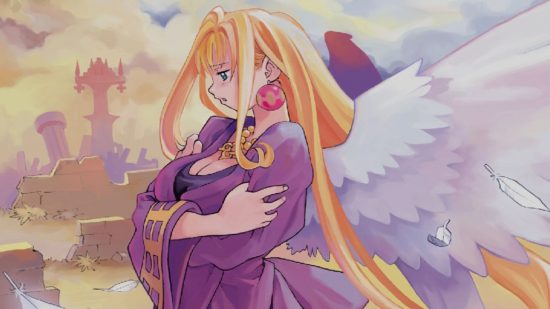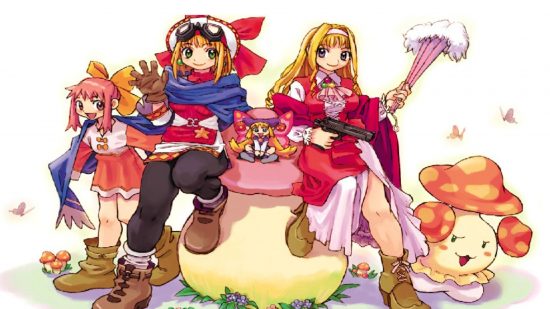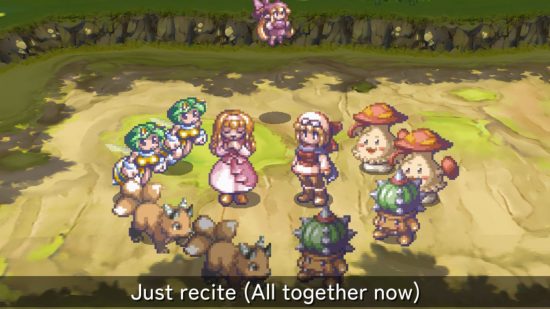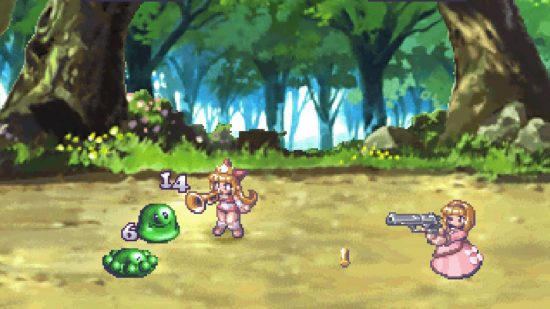Our Verdict
Rhapsody: Marl Kingdom Chronicles is a lovely window into a hilarious, melodramatic, and loveable series that many would have never got to see. While it may not be the greatest retro collection in the world, its greatness lies in its uniqueness. The fact we get to enjoy it is what makes it so special.
We all know videogames have a preservation problem. A recent study from the Video Game History Foundation found that “87 percent of classic games released in the United States are out of print.” This is outrageous, and it only focuses on one country. Videogame companies want to make money, of course, but they should also have a duty to look after their legacies. And only some are doing it at all, let alone doing it well.
One such company, NIS America, has an absolutely packed slate of releases this year, all dotted around the last 25 years of videogames, featuring unique mechanics and art, and showing us a little genre detour that may not have been picked up by the mainstream. Sure, you go back to Doom and think ‘this is ace’, but you also understand it, because of its influence on the mainstream. You got back to something like Moon: Remix RPG Adventure and it’s all a tad baffling – and I mean that in the best way possible.
Many faraway games can do this to you, and it’s a wonderful experience. Even if you don’t think the games are all that good, their greatness exists for a different reason than something brand new might. It doesn’t have to be the best game you’ve ever played, it just has to be special. And that’s sort of the magic in NIS America’s Rhapsody: Marl Kingdom Chronicles. It’s a weird old game, but it’s got an attitude – and that’s far more interesting than not having one.
It’s a double pack made up of Rhapsody II: Ballad of the Little Princess and Rhapsody III: Memories of Marl Kingdom, two games only released in Japan previously. The first is from 1999, the second the following year, and they both charm and delight as much as they beguile, and this is an excellent thing. Though, perhaps the strangest part is the omission of the first game in the series…

Both games play like most turn-based RPGs. You start in a town, head out to find something, meet people along the way who give you advice, and eventually have to dive into a battle. The towns and cities are lively and silly, with gorgeous art, particularly in Rhapsody II – sadly its sequel’s 3D backgrounds don’t hold up quite as well.
While Rhapsody III takes a Dragon Questian approach with numerous characters and chapters to work through, Rhapsody II is more straightforward. You are Kururu, the daughter of Cornet from the first game and a princess with very little knowledge of the outside world and its customs – she has a rebellious streak, and within minutes of booting up the game, she’s off out her bedroom window to go and find a handsome prince to marry.
As you walk through the castle and run away from guards, it’s all quite immediately cutesy, and you might be inclined to think it’s an easygoing kids’ game. It’s definitely easygoing, but within the next few minutes, something strange happens – everyone starts singing a song. And that’s one of Rhapsody’s lovely uniquenesses; that it’s basically a musical.
Sure, Kururu and Crea dancing by a lake and singing a song all about adventure doesn’t do much to belie this cutesy vibe, but later on, once you come to an ice cream shop run by cats, their little number is a wonderful concoction of odd, hilarious, and vaguely disturbing. It’s excellent.
While all these songs are still sung in the original Japanese (with subtitles), Rhapsody’s transfer to the West comes with lively voice acting, a resolution upgrade, and excellent localization. Every character is cartoonishly charming, over the top, and very much themselves, making it easy to get engrossed in the swirl of the story.
As you explore, there are, of course, random battles. These can be against various sorts of monsters, like mushroom people, fishes, and frogs, and while the combat is never really challenging, it’s also not some simple throwaway mechanic on the sideline. If you want to engage with it, it gives a lot back.
Rhapsody II and Rhapsody III work a tad differently, however. In the second game, you can control these creatures called puppets to do special attacks, as well as your basic attack and special attacks. The latter two work about how you’d expect, while puppets are a bit like a Final Fantasy summon: they have unique animations, you gather more as you go along, and they can be more powerful in certain situations.
Using these puppets then charges up a musical meter, which has different levels. Once a level is reached, you can launch a unique attack, and the higher the level, the more powerful the attack. Better yet, all these attacks involve launching some sort of confectionary at the enemy, like a cheesecake.
All this feeds into the amusing melodrama of the series – when cake is flying across the screen to take down a large group of smiley-faced mushrooms, it’s hard not to have a good time. And the chaos doesn’t stop at the cake, either. For example, Crea, Kururu’s buddy and partner on this journey, uses what looks like a Desert Eagle .44 Magnum pistol while doing her basic attack. It’s just ridiculous.
Rhapsody III, meanwhile, takes the combat a little further, in a way that’s a bit overwhelming. There are four rows of characters, with the front lot attacking, and everyone behind assisting. Some can engage in the battle when summoned, like puppets, while others are more of a backup. If someone faints in battle, the characters behind can move up. It’s another excellently inventive oddity to be found in these two games, even if it’s not the slickest.
All in all, that’s the key takeaway from this lovely collection – the oddities, the uniquenesses, the things so rarely seen, all make the experience far greater than it may have been if you played it when it first released. It feels like digging something up, lost and far away, even though we did none of the digging. That’s all NIS America’s doing.
For more beyond our Rhapsody: Marl Kingdom Chronicles Switch review, check out our guides to the best cute game and easy games to keep the cuteness coming.



